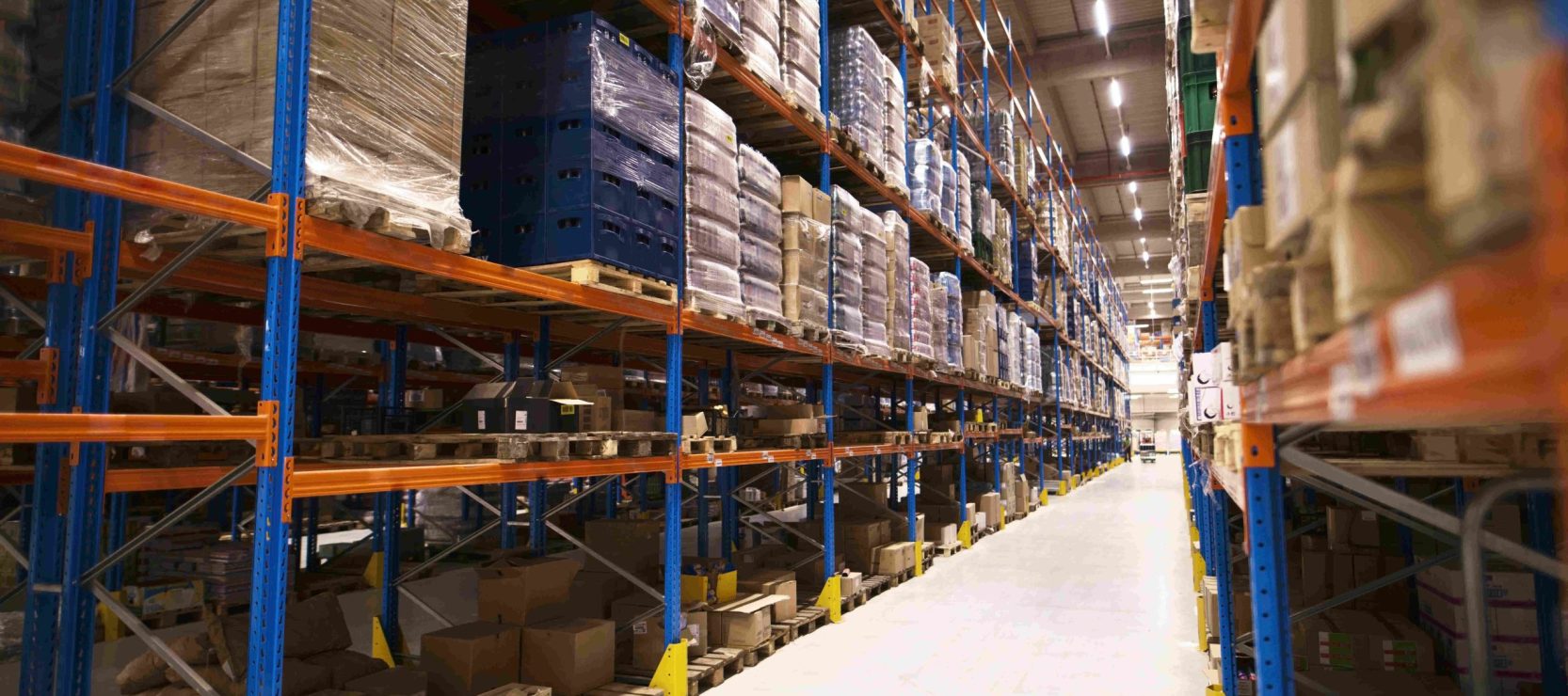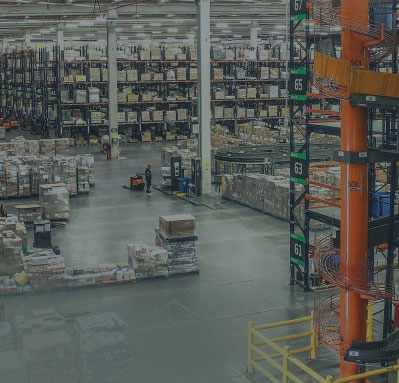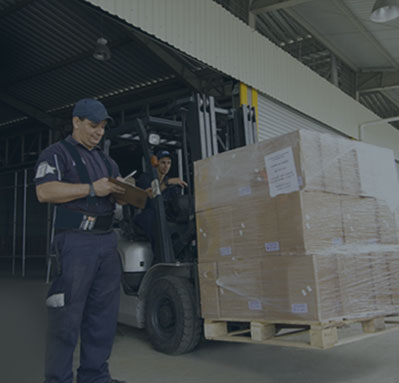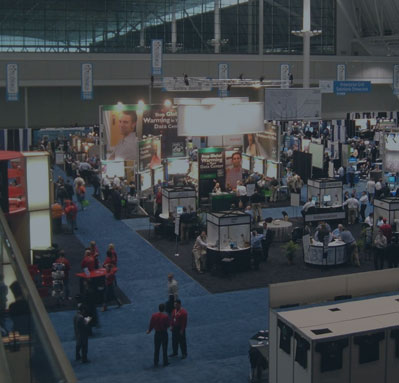Warehouse management is an important aspect of any business, and reducing costs is critical to improving profitability. Warehouse costs can account for a significant portion of the overall costs of running a business, so it’s important to find ways to reduce these costs without sacrificing efficiency or quality. As experts in freight forwarding and all things warehouse, we’ve put together a comprehensive guide to help reduce your warehouse costs.
1. Reduce Space by Optimizing Storage
To cut warehouse costs effectively, businesses can optimize their storage space. Warehouses often have unused or underutilized storage areas, leading to unnecessary overhead expenses. By maximizing the available storage space, businesses can reduce the space required to operate their warehouse, resulting in lower rent and operational costs. Vertical storage solutions and floor space optimization are two effective ways to optimize storage space. Through space optimization, companies can realize significant cost savings and increase the overall efficiency of their warehouse operations.
Specifically, space optimization can reduce costs in several ways.
- Optimizing storage space can lower the amount of space required to store goods, resulting in lower rent costs. As warehouses are typically rented on a square footage basis, reducing the amount of space needed can save businesses money on rent.
- Space optimization can lower labor costs by reducing the number of workers required to manage and move inventory. Efficient and organized storage means workers can locate and retrieve items quickly, reducing labor costs.
- Space optimization can lead to a decrease in inventory holding costs. By storing items in a more efficient manner, businesses can reduce excess inventory levels and avoid related holding costs like storage and insurance fees.
- Optimizing storage space can improve operational efficiency by facilitating easier access and retrieval of goods, reducing the time and effort required to manage inventory.
Ultimately, optimizing storage space can help businesses reduce costs, improve efficiency, and increase profitability.
2. Inventory Visibility
Gaining a comprehensive understanding of inventory levels is crucial for reducing warehouse costs. Real-time inventory visibility enables businesses to easily track stock levels and replenish them as needed, preventing stockouts or overstocking. This can lead to lower inventory holding costs and reduced labor expenses, as fewer workers are needed to manage inventory.
Implementing a Warehouse Management System (WMS) is a highly effective method which can help to achieve inventory visibility. A WMS efficiently tracks inventory levels, identifies trends, and provides insights into which items are selling rapidly and which ones are not. This data can help optimize inventory levels, preventing unnecessary costs related to overstocking or understocking. Additionally, using a WMS to gain inventory visibility leads to cost savings while improving overall efficiency in warehouse operations. Ultimately, implementing a WMS with inventory visibility capabilities is an essential step for businesses looking to reduce warehouse costs and improve operations.
Benefits of knowing your inventory include:
- Increased efficiency through optimized storage and picking processes.
- Accurate forecasting helps to manage inventory levels and prevent overstocking.
- Reduced stock levels by identifying slow-moving items and finding ways to move them out of storage faster.
- Enhanced allocation of resources helps to identify areas where labor costs can be reduced, such as through automation or cross-docking.
- Enhanced supply chain management by working closely with suppliers and customers to streamline processes and reduce lead times.
- Successfully fulfill demand by using technology such as pick-to-light systems or automated material handling systems to reduce errors and speed up the picking process.
- Lower warehouse costs by implementing theft prevention measures, using energy-efficient equipment, and refurbishing or repurposing existing equipment.
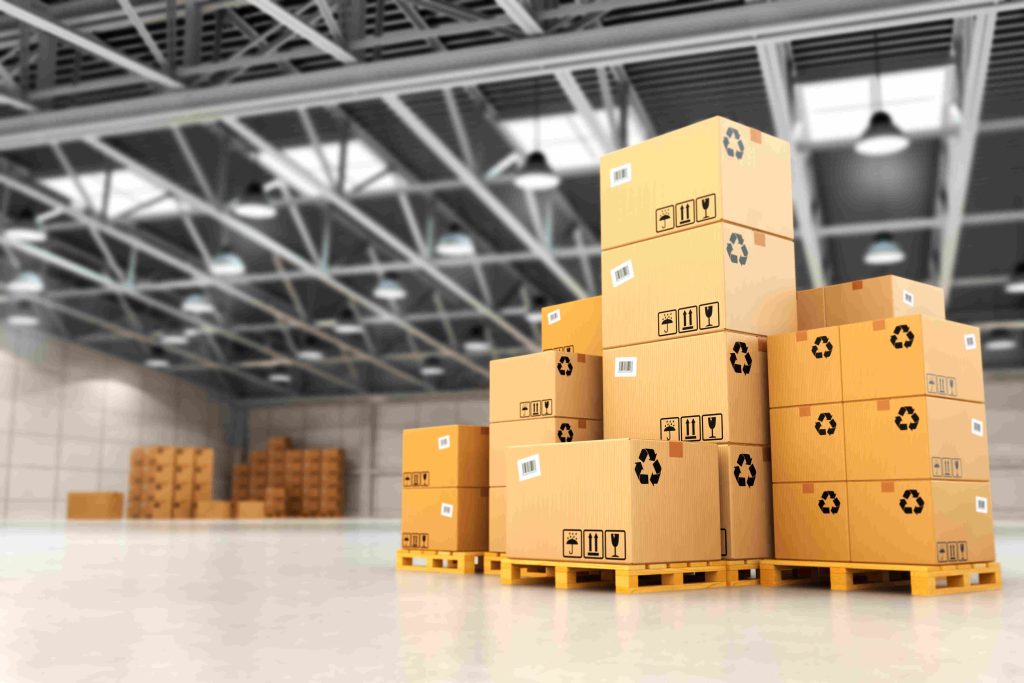
3. Cross Docking
Cross-docking offers several advantages to businesses, including reducing the need for warehousing space, minimizing labor costs, lowering inventory holding costs, and improving overall operational efficiency. Cross-docking significantly enhances operational efficiency by streamlining the supply chain and enabling prompt and efficient movement of goods. This improvement results in faster delivery times, higher customer satisfaction, and increased profitability for businesses.
By quickly transferring goods from inbound to outbound trucks, cross-docking reduces the amount of time goods need to be stored, resulting in lower rent costs. Since it requires minimal storage, cross-docking also requires fewer workers to manage and move inventory, thereby reducing labor costs. Additionally, cross-docking can lower inventory holding costs by reducing the amount of inventory held in warehouses.
4. Theft Identification and Prevention
Warehouse theft can be a significant cost to businesses. Theft can occur at any stage of the supply chain, from suppliers to customers, and can be difficult to detect. By implementing theft identification and prevention measures, you can reduce the risk of theft and reduce the associated costs.
To prevent theft, you should implement security measures such as access control, CCTV cameras, and inventory tracking systems. Businesses should also train employees to identify and report any suspicious activity. This can help prevent theft and reduce the costs associated with lost or stolen inventory.
The red flags signaling warehouse theft include:
- Inventory discrepancies: When the inventory levels don’t match the records, it can be an indication of theft. Keep an eye on unexpected changes in inventory levels.
- Missing products: If you find empty shelves or notice that products are missing, it’s possible that they have been stolen.
- Broken or tampered locks: If you find that locks have been tampered with or broken, it could mean that someone is trying to gain unauthorized access to the warehouse.
- Damaged or opened packaging: When products are damaged or the packaging has been opened, it can be a sign of theft. Be aware of these signs and investigate them promptly.
- Unexplained vehicles or individuals: If you see unfamiliar vehicles or individuals in or around the warehouse, it could indicate that someone is attempting to steal from the warehouse.
- Lack of employee accountability: When employees don’t take responsibility for their work or refuse to be held accountable for their actions, it can be a red flag for potential theft.
- Unusual behavior: Watch out for any unusual or suspicious behavior from employees or visitors to the warehouse. This may include lingering around specific areas or appearing nervous when questioned.
5. Effective Slotting
Effective slotting involves organizing inventory in a way that optimizes space and increases efficiency. By organizing inventory based on frequency of use, size, and weight, you can reduce the time it takes to pick and pack orders, reducing labor costs.
To implement effective slotting, start by analyzing inventory data to identify which items are frequently ordered together and which are not. This can help you organize your inventory in a way that reduces the time it takes to pick orders.
6. Energy Cost Reduction
Reducing energy costs can play a crucial role in cutting warehouse costs. Reducing energy costs can help warehouses reduce operational expenses, improve their bottom line, and achieve greater sustainability. With the implementation of energy-efficient lighting and heating systems, warehouses can reduce energy consumption and lower utility bills. Incorporating a warehouse management system that automatically turns off lights and equipment when not in use can further help in saving energy costs.
Warehouses consume a considerable amount of energy, and implementing energy-efficient practices can significantly reduce electricity, gas, and water usage, leading to significant cost savings. Optimizing lighting systems with LED technology, motion sensors, and timers, along with installing high-efficiency HVAC systems and insulating walls and roofs, can effectively reduce energy consumption. Additionally, implementing measures such as conducting energy audits and preventative maintenance programs can further identify and address energy inefficiencies.

7. Enhanced Picking Process
Picking is a critical process in any warehouse, and improving it can have a significant impact on warehouse costs. By reducing the time it takes to pick orders, you can reduce labor costs and improve efficiency. Benefits associated with an enhanced picking process include:
- Increased Efficiency: An optimized picking process can help workers pick orders more quickly and accurately, reducing the time needed to fulfill orders. This results in fewer hours spent on picking and packing, and ultimately lower labor costs.
- Reduced Errors: An enhanced picking process can reduce picking errors, such as incorrect items, quantities, or locations, which can lead to costly returns, reships, and dissatisfied customers. By minimizing these errors, warehouses can save money on returns, shipping costs, and customer service.
- Improved Space Utilization: A well-organized picking process can help optimize the use of warehouse space, reducing the need for extra storage and minimizing rent costs.
- Better Inventory Control: An efficient picking process can also help maintain accurate inventory levels, reducing the need for excess stock and inventory holding costs.
- Optimized Equipment Usage: An optimized picking process can reduce the amount of time forklifts and other equipment are in use, minimizing equipment maintenance costs and increasing their lifespan.
There are several ways businesses can improve their picking processes. For example, organizations can implement a pick-to-light system. This system uses lights to guide pickers to the right location and the right product, reducing errors and increasing picking speed. Another way to enhance the picking process is by using automation, such as automated guided vehicles (AGVs), which can move products to the picking area, reducing the need for workers to travel. Regardless of the method you choose, an enhanced picking process can lead to greater efficiency, accuracy, and space utilization, which ultimately reduce warehouse costs and increase profitability.
8. Leverage the Right Technology
Leveraging the right technology can help you reduce warehouse costs. A warehouse management system (WMS) can help you optimize inventory levels, reduce the time it takes to pick orders, and improve overall efficiency. A transportation management system (TMS) can help you optimize shipping routes and reduce transportation costs. Other technologies, such as automated material handling systems, can help you reduce labor costs and improve efficiency.
When selecting technology, it’s important to choose solutions that are appropriate for your warehouse size and needs. We also recommend companies select technology that is scalable and can grow with their business.
9. Benchmarking and Why You Need It
Benchmarking is a powerful tool that allows you to compare your warehouse’s performance with other warehouses, identify areas for improvement, and adopt best practices to optimize efficiency and reduce costs.
To conduct a benchmarking analysis, start by identifying the key performance indicators (KPIs) that are relevant to your warehouse. These KPIs can include inventory accuracy, order cycle time, and order picking accuracy. Then, compare your warehouse’s KPIs to those of other warehouses in your industry or your company to identify performance gaps and areas where improvement is needed.
Benchmarking helps you gain insights into industry standards and best practices, allowing you to identify specific improvements that can increase operational efficiency and reduce costs. For instance, if your order cycle time is longer than the industry standard, you can explore options like implementing a pick-to-light system or automating the picking process to reduce the cycle time.
10. Make the Most of Your Equipment
Equipment is a significant expense for warehouses, especially for forklifts and conveyor belts. However, using equipment wisely can significantly extend its lifespan and reduce repair and maintenance costs, resulting in cost savings.
To ensure equipment is being used properly and maintained regularly, it’s essential to provide employees with safety and efficiency training, conduct routine maintenance, and promptly schedule repairs when issues arise. Implementing a preventive maintenance program can also help identify and address potential problems before they become costly issues.
It’s equally important to evaluate whether purchasing new equipment is necessary or if refurbishing or repurposing existing equipment could be more cost-effective. Not only can this approach save money, but it can also extend the life of the equipment and reduce the need for expensive replacements. By using equipment wisely, warehouses can minimize repair and maintenance costs, increase operational efficiency, and extend the lifespan of their equipment. This, in turn, leads to cost savings and ultimately, higher profitability.
Reduce warehouse costs with Cargoline
Reducing warehouse costs is a critical step for businesses to improve profitability and sustainability. At Cargoline, we help companies reduce warehouse costs through innovative solutions. From helping to optimize storage space and gaining inventory visibility to enhancing the picking process and implementing a WMS, we are here to help protect your bottom line. Leveraging our expertise and innovative solutions, we empower businesses to streamline their warehouse operations, increase efficiency, and ultimately reduce costs. Contact a member of our team to learn more.
